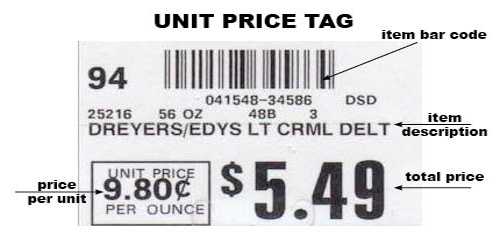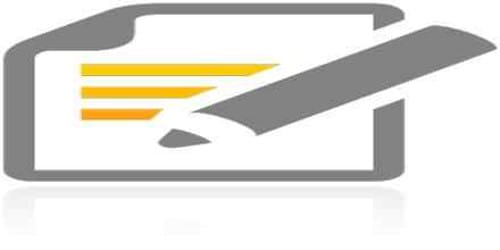Letter of Credit:
Foreign trade can be easily defined as a business activity, which crosses national boundaries. These may be between parties or government ones. Trade among nations is a common occurrence and normally benefits both the exporters and importers.
Foreign trade can usually be justified on the principle of comparative advantage. According to this economic principle, it is economically profitable for the country to specialize in production of that commodity in which the producer country has the grater comparative advantage and to allow the other country to produce that commodity in which it has the lesser comparative advantage. It includes the spectrum of goods, services, investment, technology transfer etc. These trades among various countries calls for lose linkage between the parties dealing in trade. The banks, which provide such transactions, are referred to as rendering international banking operations. International trade demands a flow of goods from seller to buyer and of payment from buyer to seller. And this flow of goods and payment are done through letter of credit (LC).
- Letter of Credit:
Letter of credit (L/C) can be defined as a “Credit Contract” whereby the buyer’s bank is committed (on behalf of the buyer) to place an agreed amount of money at the seller’s disposal under some agreed conditions. Since the agreed conditions include, amongst other things, the presentation of some specified documents, the letter of credit is called Documentary Letter of Credit. The Uniform Customs & Practices for Documentary Credit (UCPDC) published by international Chamber of Commerce (1993) Revision; Publication No. 600 defines Documentary Credit:
Any arrangement however named or described whereby a bank (the “issuing bank“) acting at the request and on the instructions of a customer (the “Applicant”) or on its own behalf.
To make a payment or to the order of a third party(the beneficiary) or is to accept and pay bills of exchange(Drafts)drawn by the beneficiary, or
Authorizes another bank to effect such payment or to accept and pay such bills of exchange (Drafts)
Authorizes another bank to negotiate against stipulated documents provide that terms and conditions are complied with.
Types of Documentary Credits
Documentary Credits may be either:
(i) Revocable or, (ii) Irrevocable.
Revocable credit: A revocable credit is a credit that can be amended or cancelled by the issuing bank at any time without prior notice to the seller.
In case of seller (beneficiary), revocable credit involves risk, as the credit may be amended or cancelled while the goods are in transit and before the documents are presented, or although presented before payments has been made. The seller would then face the problem of obtaining payment on the other hand revocable credit gives the buyer maximum flexibility, as it can be amended or cancelled without prior notice to the seller up to the moment of payment buy the issuing bank at which the issuing bank has made the credit available, In the modern banking the use of revocable credit is not widespread.
Irrevocable credit: An irrevocable credit constitutes a definite undertaking of the issuing bank (since it can not be amended or cancelled without the agreement of all parties thereto), provided that the stipulated documents are presented and the terms and conditions are satisfied by the seller. This sort of credit is always preferred to revocable letter of credit.
Sometimes, Letter of Credits is marked as either ‘with recourse to drawee@ or ‘without recourse to drawer’.
Parties for Letter of Credit:
The parties are:
- The Issuing Bank,
- The Confirming Bank, if any, and
- The Beneficiary.
Other parties that facilitate the Documentary Credit are:
- The Applicant,
- The Advising Bank,
- The Nominated Paying/ Accepting Bank, and
- The Transferring Bank, if any.
- Importer – Seller who applies for opening the L/C.
- Issuing Bank – It is the bank which opens/issues a L/C on behalf of the importer.
- Confirming Bank – It is the bank, which adds its confirmation to the credit and it is don at the request of issuing bank. Confirming bank may or may not be advising bank.
- Advising / Notifying Bank – is the bank through which the L/C is advised to the exporters. This bank is actually situated in exporter’s country. It may also assume the role of confirming and / or negotiating bank depending upon the condition of the credit
- Negotiating Bank – is the bank, which negotiates the bill and pays the amount of the beneficiary. The advising bank and the negotiating bank may or may not be the same. Sometimes it can also be confirming bank.
- Paying / Accepting Bank – is the bank on which the bill will be drawn (as per condition of the credit). Usually it is the issuing bank.
- Reimbursing bank – is the bank, which would reimburse the negotiating bank after getting payment – instructions from issuing bank.
Some Important Documents of L/C:
Forwarding: Forwarding is the letter given by the advising bank to the issuing bank. Several copies are sent to the issuing bank. All copies including original should be kept in the bank.
Bill of Exchange: According to the section 05, Negotiable Instruments (NI) Act-1881, A “bill of exchange” is an instrument in writing containing an unconditional order signed by the maker, directing a certain person to pay [on demand or at fixed or determinable future time] a certain sum of money only to or to the order of a certain person or to the bearer of the instrument. It may be either at sight or certain day sight. At sight means making payment whenever documents will reach in the issuing bank.
Invoice: Invoice is the price list along with quantities. Several copies of invoice are given. Two copies should be given to the client and the other copies should be kept in the bank. If there is only one copy, then its photocopy should be kept in the bank and the original copy should be given to the client. If any original invoice contains the custom’s seal, then it cannot be given to the client.
Packing List: It setter describing the number of packets and there size. If there are several copies, then two copies should be given to the client and the remaining should be kept in the bank. But if there is only one copy, then the photocopy should be kept in the bank and the original copy should be given to the client.
Bill of Lading: Bill of Lading is the bill given by shipping company to the client. Only one copy of Bill of Lading should be given to the client and the remaining copy should be kept in the bank.
Certificate of Origin: Certificate of origin is a document describing the producing country of the goods. One copy of the certificate of origin should be given to the client and the remaining copy should be kept in the bank. But if there is only one copy, then the photocopy should be kept in the bank and the original should be given to the client.
Shipment Advice: The copy mentioning the name of the insurance company should be given to the client and the remaining copies should be kept in the bank. But if only one copy is given, then the photocopy should be kept in the bank and the original copy should be given to the bank.
Form – IMP
This form is prepared for maintaining account of the money, which goes out side the country for the purpose of payment. This form is required by Bangladesh Bank. It is an application for permission under 4/5 of the Foreign Exchange Regulation Act, 1947 to purchase foreign currency for the payment of import.
IMP – FORM has four copies:
- Original copy for Bangladesh Bank.
- Duplicate copy for authorized dealers. It is issued for processing Exchange Control Copy of bill of entry or certified invoice.
- Triplicate copy for authorized dealers’ record.
- Quadruplicate copy for submission to the bank in case of imports where documents are retired.
Following documents are sent with FORM-IMP:
- Letter of Credit Authorization Form(LCAF),
- One copy of invoice,
- Indent copy / proforma invoice.
The following Information is included in the FORM-IMP:
Name and address of the authorized dealer,
Amount of foreign currency in words and figures,
Names and address of the beneficiary,
L/C Authorization Form number and date,
Registration number of L/C Authorization Form with Bangladesh Bank, and
Description of the goods.
Accounting Treatment for Opening LIC.
For opening L/C, importer will apply to the issuing bank. In that case, importer is called applicant or opener. After opening an L/C bank will create a contingent liability. In that case, the accounting posting will be the following-.
| Customers liability | Dr. | |
| Contingent Liability | Cr. |
Generally L/C is opened against some margin.
- While paying the money by the issuing bank, issuing bank will reverse the above entry and the entry will be-
| Contingent Liability | Dr. | |
| Customers Liability | Cr. |
Then the issuing bank will give another entry-
| Payment Against Document (PAD) | Dr. | |
| AB General Account | Cr. | |
| Exchange Gain | Cr. |
PAD will debit because the bank will pay the money against some documents’ General Account is a miscellaneous account. It will be credited because by this entry ABBL creates a liability. He has to pay the money to the advising bank. And the gain made by the transaction is shown at Exchange Gain Account.
All these entries are made after receiving some documents from the exporters. The above procedure is called Lodging.
After giving the above entry, ABBL will inform the clients for collecting the documents from the bank.
- Importers will pay the due to the bank and collects the documents. In that case, the entry will be –
| Party Account | Dr. | |
| PAD Account | Cr. |
After opening the L/C, ABBL (issuing bank) must receive the documents for any other proceedings. These documents are —
i. Bill of Lading,
ii. Invoice,
iii. Packing List,
















